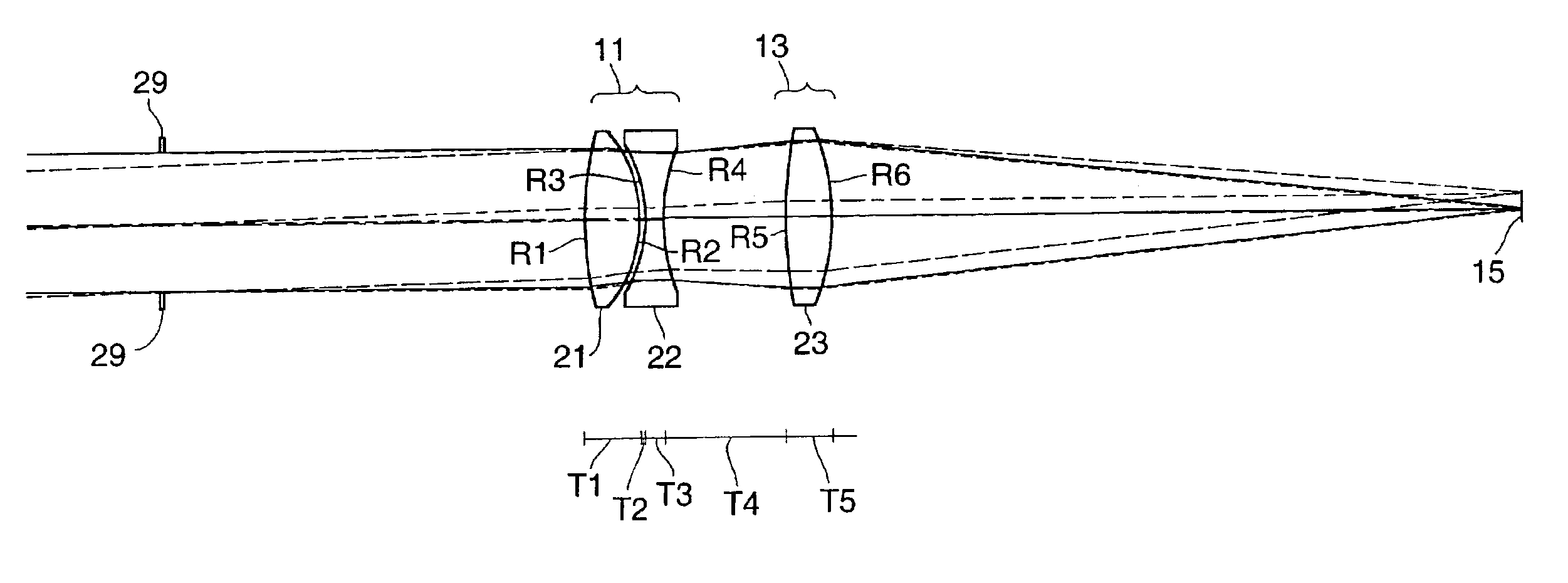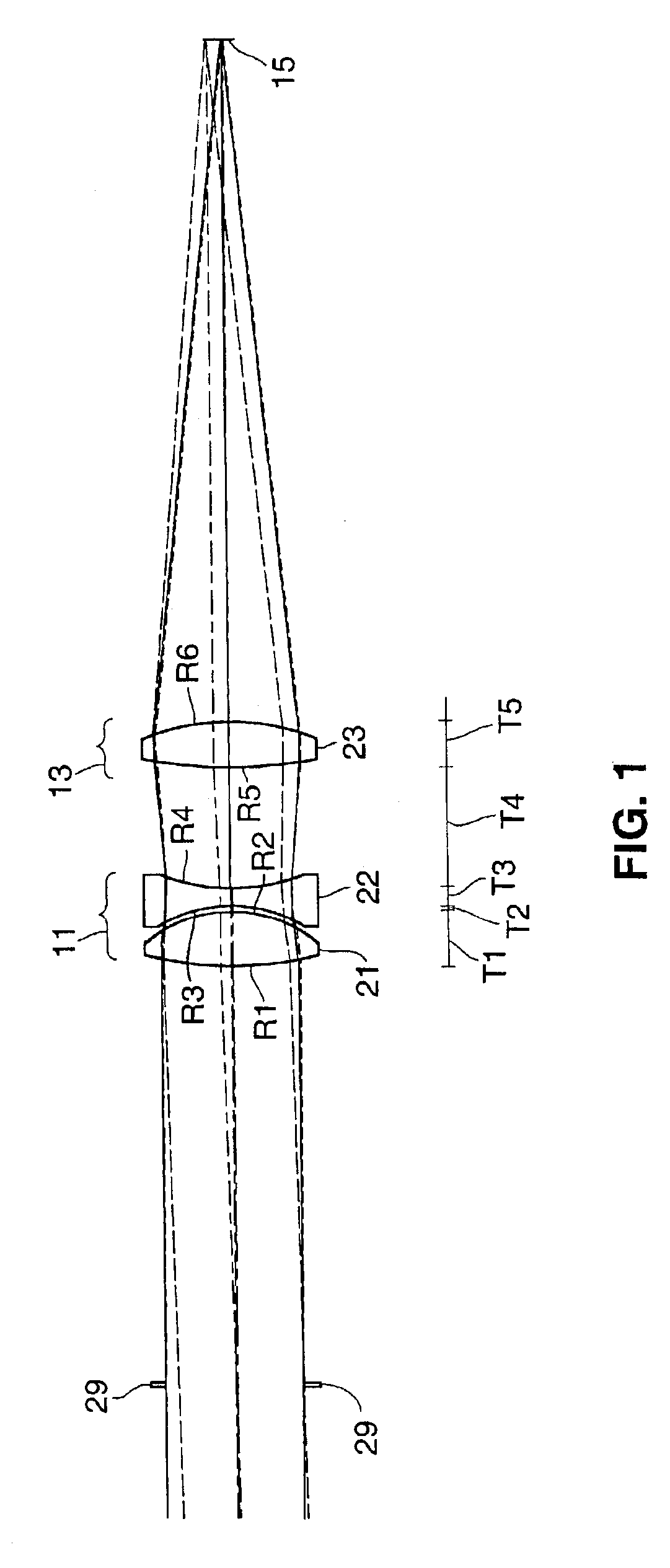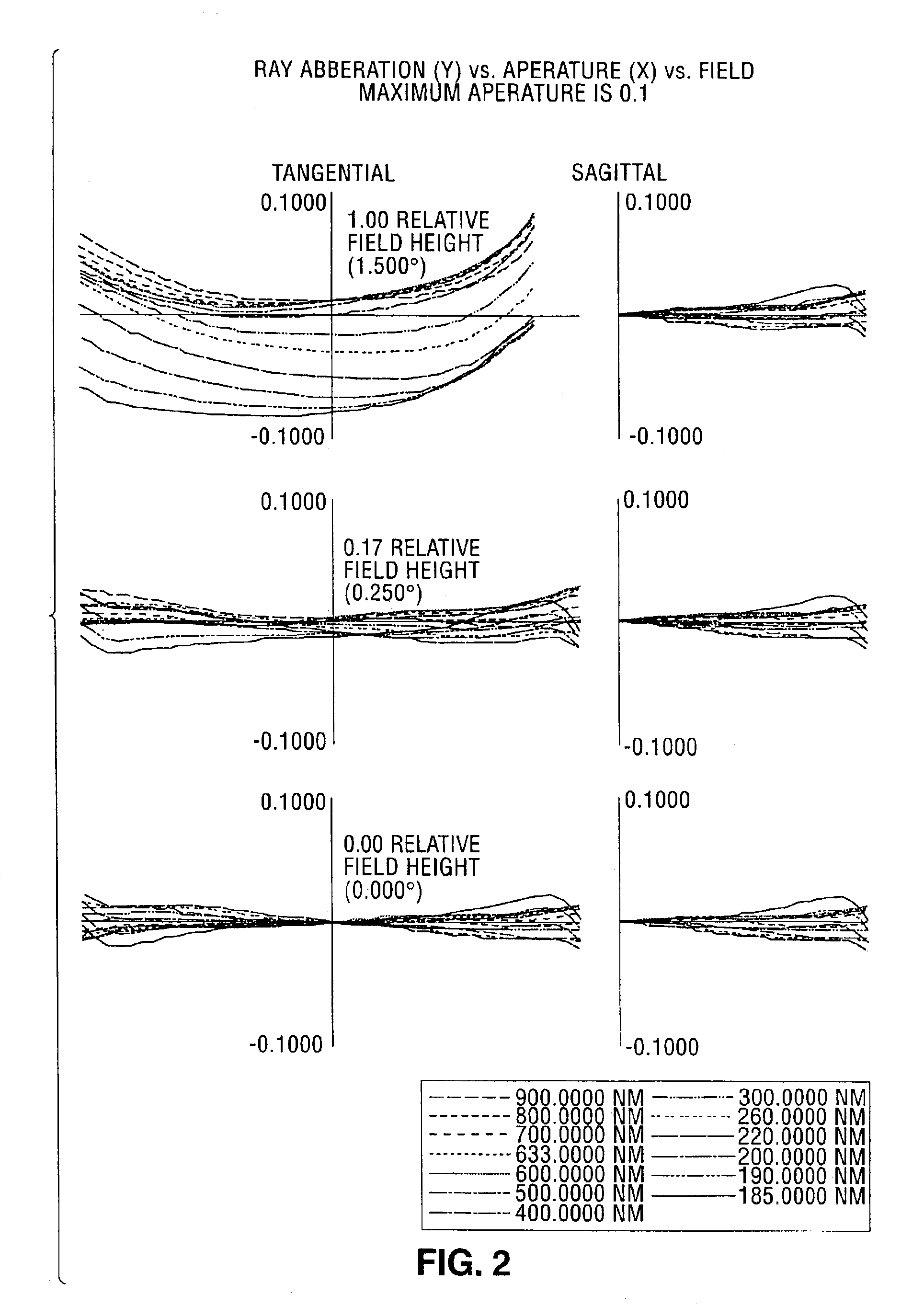Broadband refractive objective for small spot optical metrology
a narrowband, optical metrology technology, applied in the field of optical metrology, can solve the problems of limiting the size of the focal spot, affecting the accuracy of the optical metrology, and becoming a source of measurement errors
- Summary
- Abstract
- Description
- Claims
- Application Information
AI Technical Summary
Benefits of technology
Problems solved by technology
Method used
Image
Examples
example 1
r1 = 0.481Ft1 = 0.083Fr2 = −0.231Ft2 = 0.008Fr3 = −0.218Ft3 = 0.025Fr4 = 0.314Ft4 = 0.185Fr5 = 0.970Ft5 = 0.066Fr6 = −0.392F
[0029]FIG. 2 shows transverse aberration plots for the preferred embodiment illustrated in FIG. 1. A total of six plots are shown. The plots are grouped in pairs and arranged vertically. For each pair the plot on the left corresponds to y-directed (tangential) ray intercept errors (mm) vs. relative NA, and the plot on the right shows the corresponding x-directed (sagittal) errors (mm) vs. relative NA. Calculations were performed for several discrete wavelengths spanning the spectral region between 185 and 900 nm. The NA varies between 0 and 0.1.
[0030]The lower two plots correspond to the on-axis aberrations. The on axis errors are small, significantly less than ±0.03 mm for relative 0≦NA≦0.1. Furthermore, the wavelength dependence of the aberrations is weak. In the spectroscopic ellipsometers manufactured by the assignee herein, these on-axis curves correspond ...
example 2
r1 = 0.741Ft1 = 0.091Fr2 = −0.263Ft2 = 0.015Fr3 = −0.247Ft3 = 0.036Fr4 = 0.281Ft4 = 0.088Fr5 = 0.530Ft5 = 0.082Fr6 = −0.366F
[0036]The refractive objective may be employed as part of the illumination system and / or part of the light collection system in optical metrology applications. In general, the refractive objective may be used as a substitute for any off-axis focusing mirror in collimated space. Consequently, the refractive objective is applicable to the design of the majority of broadband optical metrology tools including spectroscopic reflectometers, spectroscopic ellipsometers, spectroscopic scatterometers and optical CD metrology tools.
[0037]When used in an illumination system, the refractive objective is situated between the light source and the sample. In one arrangement, the refractive objective brings the source light to a sharp focus at a desired location for purpose of spatial filtering. In another arrangement, the refractive objective collimates the source beam, for r...
PUM
 Login to View More
Login to View More Abstract
Description
Claims
Application Information
 Login to View More
Login to View More - R&D Engineer
- R&D Manager
- IP Professional
- Industry Leading Data Capabilities
- Powerful AI technology
- Patent DNA Extraction
Browse by: Latest US Patents, China's latest patents, Technical Efficacy Thesaurus, Application Domain, Technology Topic, Popular Technical Reports.
© 2024 PatSnap. All rights reserved.Legal|Privacy policy|Modern Slavery Act Transparency Statement|Sitemap|About US| Contact US: help@patsnap.com










